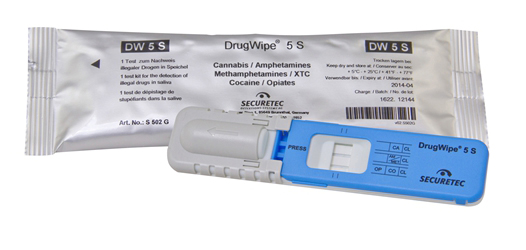Test and Measure: Not all testing methods equal
TORONTO, Ont. — Whether testing for the presence of alcohol or drugs in a workplace, or at the side of a road, each tool comes with its own pros and cons.
Now that Canada is preparing to legalize recreational marijuana, police forces across the country are being trained in oral fluids testing, also known as saliva testing, and the Standardized Field Sobriety Test (SFST). And these are both options for a fleet looking to determine a driver’s fitness for duty.
Both methods offer immediate results – unlike tests involving hair, urine, or blood. That’s good enough to determine fitness for duty and keep a potentially impaired driver off the highway. But courts typically rely on another layer of tests, which means the initial positive results might not be enough to terminate someone.
Oral Fluids

One of the companies vying to provide the go-to oral fluid test for law enforcement officials is Alcohol Countermeasure Systems (ACS) of Toronto. It’s the North American distributor for DrugSwipe S, which is used in countries like Australia and is one of three types of oral fluid tests being considered for use by the RCMP, says marketing manager Tony Power.
That test involves a strip contained in a small, flat, blue-and-white plastic stick, which vaguely resembles a pregnancy test. Drivers offer a sample of saliva, and the stick is laid flat for five minutes. Lines appear if the sample was registered and identify what drugs are detected. Positive results are measured at 50 ng/ml of THC, the active ingredient in marijuana, although that’s almost double the measure of impairment being proposed by the federal government.
Standardized Field Sobriety Tests (SFST)
Another way to identify impaired employees comes in the form of the Standardized Field Sobriety Test. A staple of scenes in movies and TV shows, it can involve someone standing at the side of the road touching their nose, reciting the alphabet backwards, or trying to walk a straight line. But it’s more nuanced than Hollywood might suggest, and requires officers to take a 72-hour course to certify in the method.
Observers are looking for things like eyes jerking to the side. Walking a straight line or standing on one leg is used to measure balance. Those conducting tests are also looking for the smell of pot or alcohol, as well as slurred speech, bloodshot or glassy eyes, dilated pupils, and delayed reactions.
Want to test a delayed reaction before a driver gets into the cab? Try talking to them, says Federal Motor Carrier Safety Administration literature. If they are slow to register questions or respond, they might be intoxicated.
Once a fleet manager has probable cause to pull a driver out of a cab, it’s on to the next round of testing.
Urine and blood tests
Urine and blood tests are both the gold standard for measuring drugs and alcohol, but should be performed by a qualified group of labs.
Support for these methods include tracking the chain of custody for all tests, from taking the sample, to its transportation to a lab and storage. Employers should never expect to take or keep an actual blood, urine, or hair sample themselves.
Hair follicle testing
So why blood and urine and not hair follicle testing? The method has seen it’s share of controversy over the last several years. Groups from Motherisk to the Owner-Operator Independent Drivers Association (OOIDA) have objected to or had problems with this method.
The testing requires labs to take a quarter-inch hair sample from the base of a person’s scalp to be effective. If that much hair isn’t available, testers have to look elsewhere on the body, like an armpit.
Hair tests are hard to get right. The now infamous Motherisk tests done at the Hospital for Sick Kids saw hundreds of children removed from parental care because of false positive results. Scientists in Sick Kids’ labs were reportedly poorly trained on the method – which can be unstable.
The OOIDA also calls the test unproven, and objected strongly to a U.S. bill that would have allowed it as an alternative for pre-employment testing.
Both groups say the higher rate of false positives happen because hair absorbs things from the environment and not just a donor.
An alternative to hair testing must be offered for those with religious or other objections to having their hair cut, too, meaning blood or urine tests must be available anyway.
Have your say
This is a moderated forum. Comments will no longer be published unless they are accompanied by a first and last name and a verifiable email address. (Today's Trucking will not publish or share the email address.) Profane language and content deemed to be libelous, racist, or threatening in nature will not be published under any circumstances.